(915 products available)
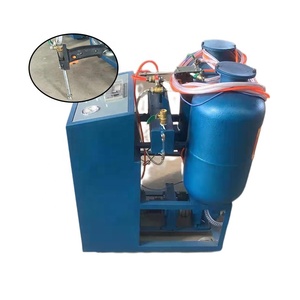
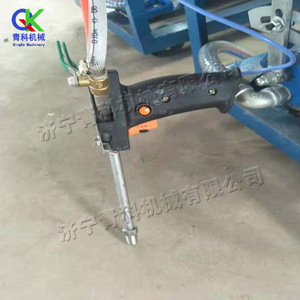









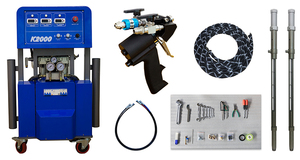
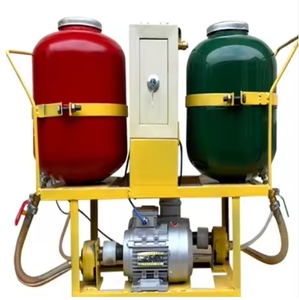



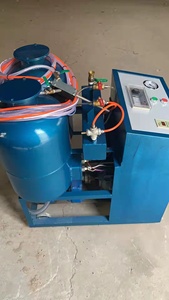
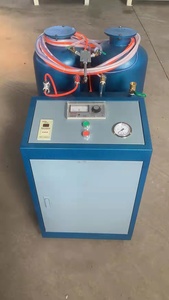

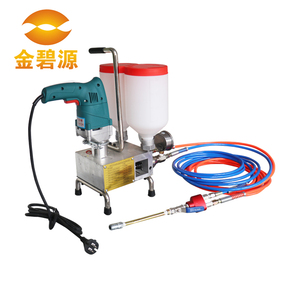
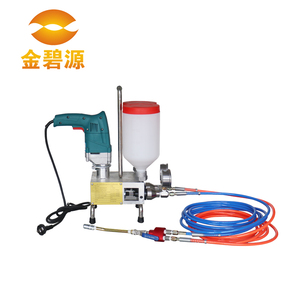









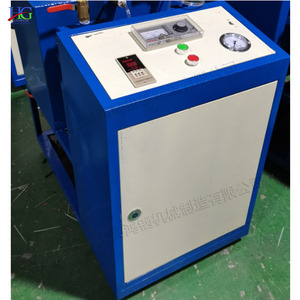

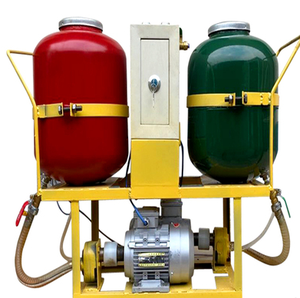



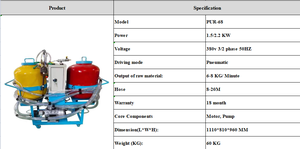










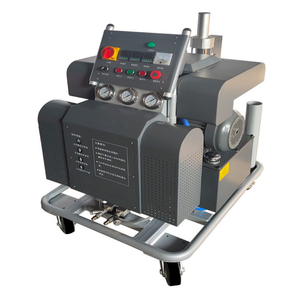




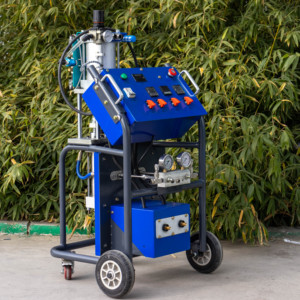
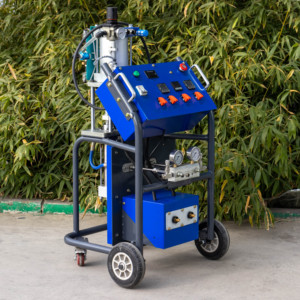

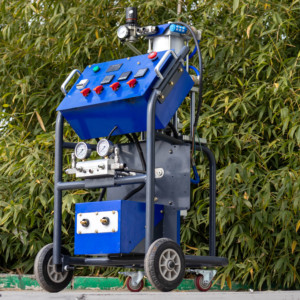






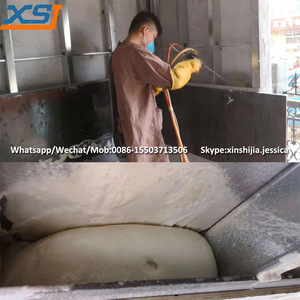
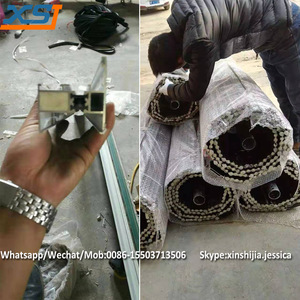
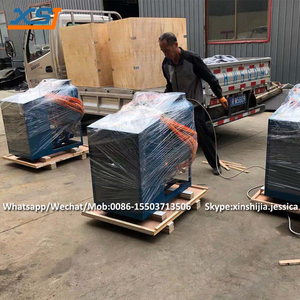

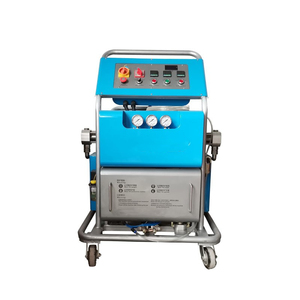



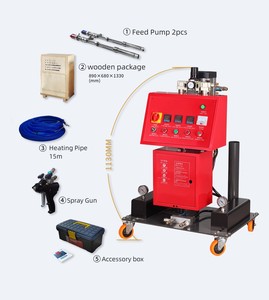




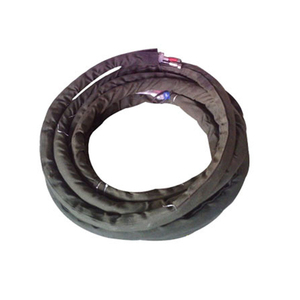



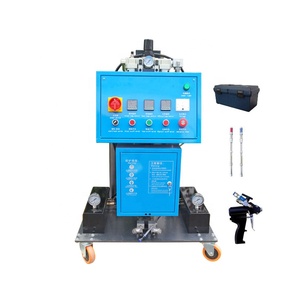









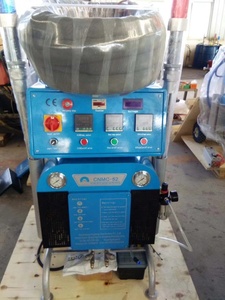
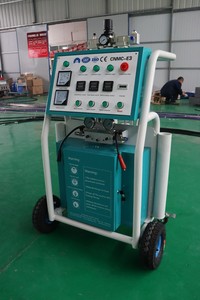



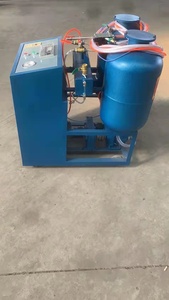














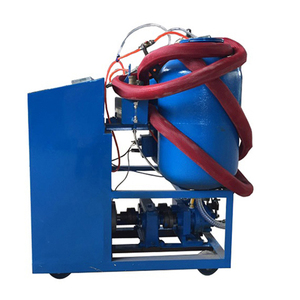









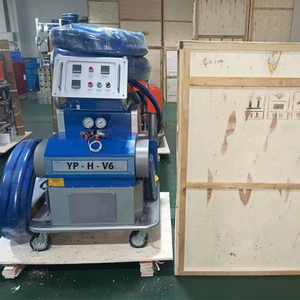
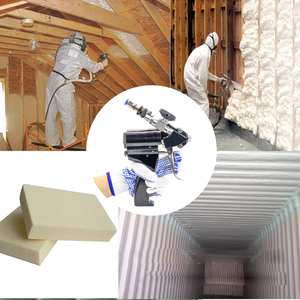
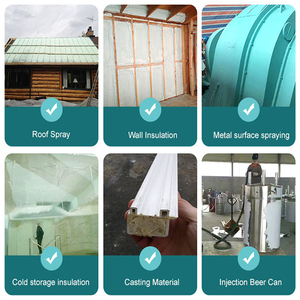
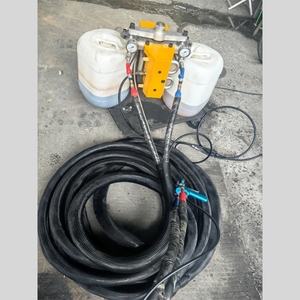









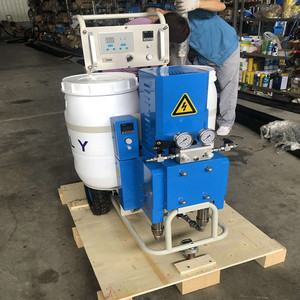


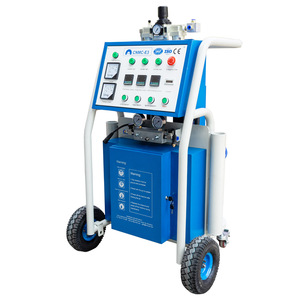

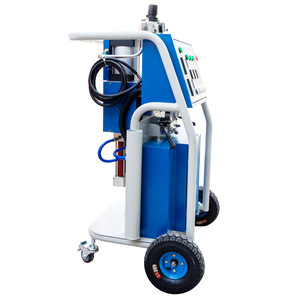

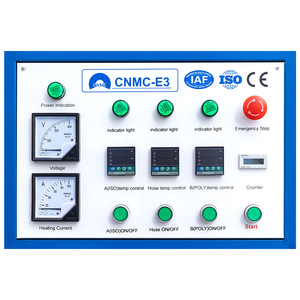





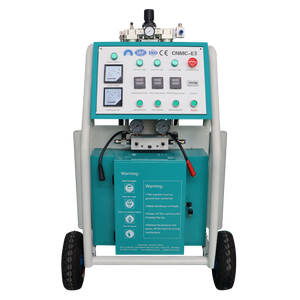




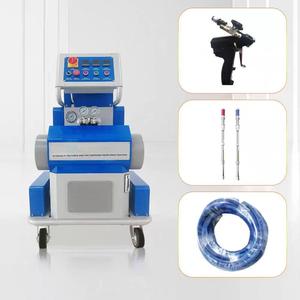


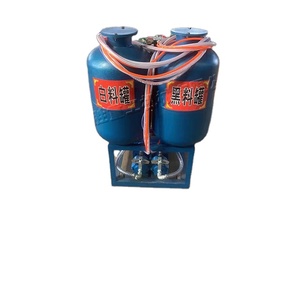
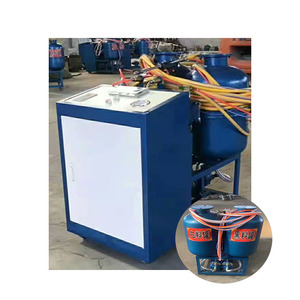
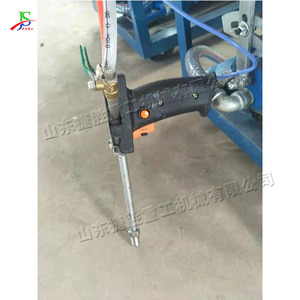
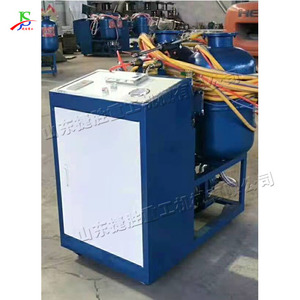
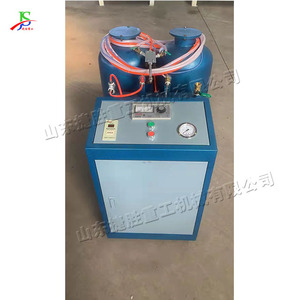










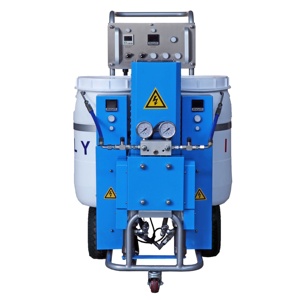
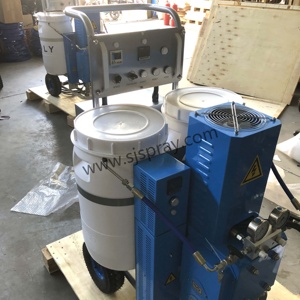
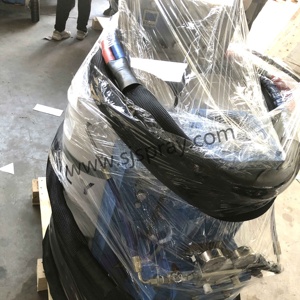
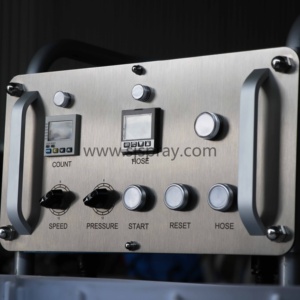

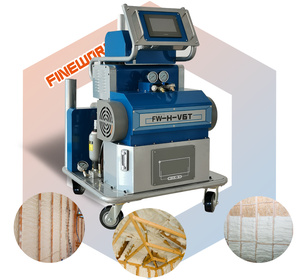










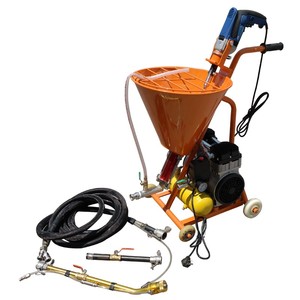

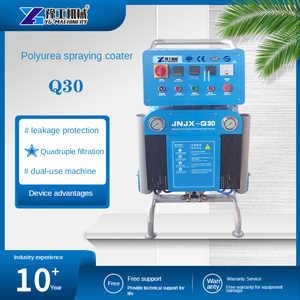
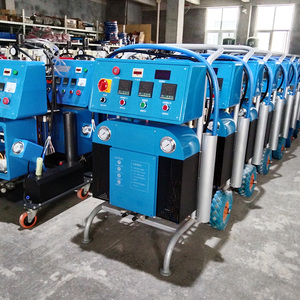

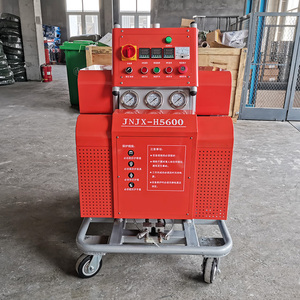











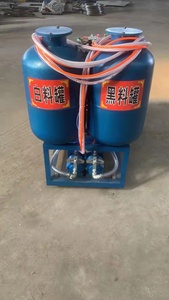




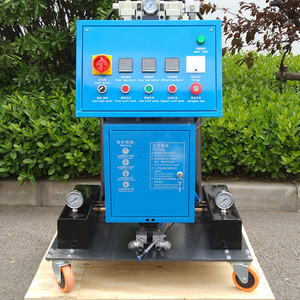
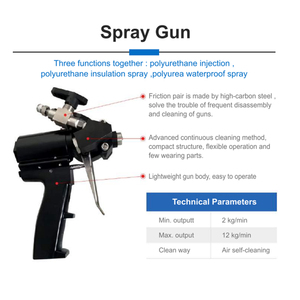




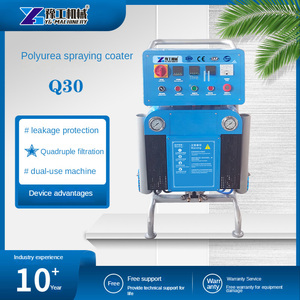





Small polyurethane spray machines come in a variety of types, each designed to cater to specific needs in the application of polyurethane foam. The table below summarizes some of the distinct kinds of small polyurethane spray machines and their features.
Air-Purge Spray Guns
This type of spray gun uses air pressure to expel the foam components from the gun atomizer. It works by using the atmospheric pressure to push out the foam materials from the gun tip. Guns of this nature are usually lightweight and easy to handle. They also require little or no setup time.
Electrostatic Spray Guns
The electrostatic guns are designed to apply a positive charge to the liquid foam material before it is sprayed. The spraying creates a negative charge on the surfaces to be coated. This charging means both sides become opposites and attracts each other, making for an even and thorough coating application. This type of gun offers high transfer efficiency and a superior finish. It also allows for the coating of complex shapes and reduces overspray and material waste.
Airless Spray Guns
This type of spray gun works by using high-pressure hydraulic lines to atomize and spray foam materials. This creates a smooth and even application without the need for air compressors. One major selling point of airless spray guns is that they offer excellent control over the foam application.
Understanding the key specifications of a small polyurethane spray foaming machine helps buyers know what to expect in terms of performance, capacity, and compatibility.
Spray Gun:
The spray gun is the most important part of the foaming machine. It is built to mix and apply the liquid components evenly. Options like swirl mix heads help to get an even finish all around. The design must be user-friendly so the person using it can control what they are doing with precision.
Mixing Method:
How the small foam spray machine combines the two parts of the foam chemically is very important. Some machines use static mixing to get a uniform mix without moving parts, while others with nozzles for dynamic mixing allow for better blending during the mixing process. The choice of mixing style affects both how well the mixing is done and how smoothly it sprays.
Power Source:
Small polyurethane spray machines can be driven by air compressors, electricity, or gas engines. Air-driven machines work well in high-pressure situations, while electric-powered ones are easier to use and less noisy. Gas-powered options provide mobility in places without electricity.
Output Rate:
This is the amount of foam the machine produces, measured in pounds or kilograms of foam material per minute. It shows how fast the mixing and spraying functions of the machine work together. Machines with high-output rates help get jobs done faster, especially for larger projects.
Air Requirements:
It is important to know how much air pressure (measured in pounds per square inch, or psi) and volume (measured in cubic feet per minute, or cfm) the machine needs to function properly. This helps determine what size compressor is needed for smooth operation.
A regular maintenance schedule for small polyurethane spray machines is important to keep them running well. Here are some routine maintenance activities along with tips for proper care of the equipment.
Clean:
Cleaning the spray gun, mixing tips, and nozzles right after use is one of the most important maintenance tasks. This prevents foam buildup from hardening. Use the recommended solvent or flushing agent to clean thoroughly. Ensure all moving parts are lubricated as per the manufacturer's instructions on lubrication points and types. Regularly inspect the air filter and drain any collected moisture. Replace the air compressor parts if they show any signs of damage or wear.
Inspect:
Inspection should be done regularly on a set schedule, not just when users remember to check. Develop a spray foam machine inspection routine based on the spraying frequency. During each check, look for any air hoses or tanks that have leaks, checking for bulges, cracks, or fluid seeping out. Inspect the chemical blend pipes as well. Hoses should be free from any kinks or abrasions, too. Take care to check if all gun nozzles are free of blockages.
Repair:
Users should respond promptly to any abnormalities detected during inspections by addressing them immediately, instead of continuing to operate the machine with a problem. This prevents further equipment damage and ensures high spray quality is maintained. Use only genuine replacement parts made for the specific spray foam machine model. Have a qualified technician do repairs if they are not trained on how to fix it properly. Training should be provided to personnel on proper repair techniques, so they understand what needs to be done, helping to extend the equipment's life.
Spray Foam Insulation:
Small polyurethane machines are extensively used in the construction industry for spray foam insulation. They are employed to apply foam insulation in walls, attics, basements, and crawlspaces to provide thermal insulation, air sealing, and moisture control.
Spray Foam Packaging:
Small polyurethane spray machines are commonly used in the packaging industry to create protective foam packaging. Spray foam is applied to form foam inserts, boxes, or shells around fragile or irregular-shaped products to provide cushioning and shock absorption during transportation.
Spray-on Rigid/Elastomeric Coatings:
Small polyurethane spray machines can be used to apply rigid or elastomeric coatings. These coatings are sprayed onto surfaces to create waterproof, protective, and durable foam layers for various applications, including waterproofing membranes, protective cladding, and impact-resistant coatings, among others.
Spray Foam Repairs and Restoration:
Small polyurethane spray machines are useful in repairs and restoration. They can be used to fill voids, cracks, or holes in structures, provide structural support, or restore damaged foam insulation.
Automotive and Marine Applications:
Small polyurethane spray machines can be used in the automotive and marine industries for various applications. These may include applying foam insulation for soundproofing, filling gaps and voids, or creating custom foam shapes and components for vehicles, boats, or yachts.
Creative and Artistic Applications:
Small polyurethane spray machines can be used creatively and artistically. They can be used to create foam sculptures, installations, stage sets, or props for theaters, film studios, or exhibitions. Additionally, foam can be used for architectural elements such as ornamental features, facades, or decorative coatings.
When purchasing a small polyurethane spray foam machine, several factors must be considered to ensure that the equipment acquired will meet the specific needs of the business. First, customers need to assess the type of foam they will be spraying:
Flexible vs. Rigid Foam:
Application requirements may call for either flexible or rigid insulation. Each type has a distinct spray machine formulation and characteristics.
Open Cell vs. Closed Cell:
An open-cell structure allows air to fill the foam, making it less dense and more absorbent. A closed-cell structure makes it more rigid and impervious to water. The choice between open and closed cells depends on the desired insulation properties and moisture resistance.
Secondly, it is important to consider the size of the jobs that will be performed. The output capacity of the spray foam machine should match the scale of the tasks at hand. Users will need to decide whether to go for a portable unit for small, quick jobs or a larger, more mobile machine for mid- to large-sized tasks. Furthermore, the degree to which the worksite will have foaming material sprayed to insulate will help determine whether a gas-powered, electric, or diesel spray foam insulation machine is preferred. Job site access may also call for compact size, so searching for the most portable options is important.
Thirdly, focus on how the hoses are heated. There are two primary hose heating methods in spray foam insulation machines: internal heat and external heat. Machines with internally heated hoses use electrical cables housed within the hose to ensure a consistent temperature. Those with externally heated hoses have heating coils wrapped around the hose, which is usually powered by an external power source or the machine itself. Both of these methods offer their advantages. In particular, external heating allows for the use of temperature controllers to adjust the heat along the length of the feeding hose.
Finally, it will be helpful to consider additional features and settings. Users may want to manually adjust the temperature of the foam components with digital temperature settings. If they want more precise control, the machine should also allow for temperature control of the heated hoses and gun. Other settings they can adjust include the spray gun fan settings, pump ratio, filter cleaning, spray nozzle size, and more.
Q1: How does a small polyurethane spray machine work?
A1: A small polyurethane spray machine mixes two components chemicals, isocyanates, and polyols, at a specific ratio. Then, it sprays the mixture through a high-pressure spray gun. Firstly, the materials are heated, and then the isocyanates and polyols are combined and agitated. Finally, the mixture is forced through a hose into a spray gun, where it is activated and sprayed onto the desired surface.
Q2: What are the trends in small polyurethane spray machine technology?
A2: The small polyurethane spray machine moves toward more automated and intelligent systems, such as real-time monitoring and spray pattern control. They also improve energy efficiency, reduce waste, and enhance insulation performance.
Q3: What are the benefits of small polyurethane spray machines?
A3: They improve insulation performance, are energy-efficient, provide different coverage, facilitate faster construction, and enhance sealant capability. They also resist moisture, mold, and mildew.
Q4: Can someone use any type of polyurethane in a spray?
A4: No, it is essential to use a specifically formulated spray forUltravioletsmall polyurethane. These sprays are manufactured to be adequately mixed and atomized in the spray process.